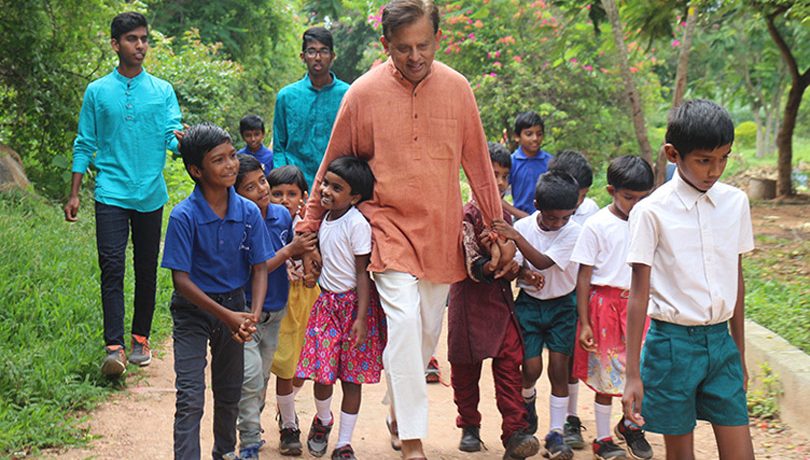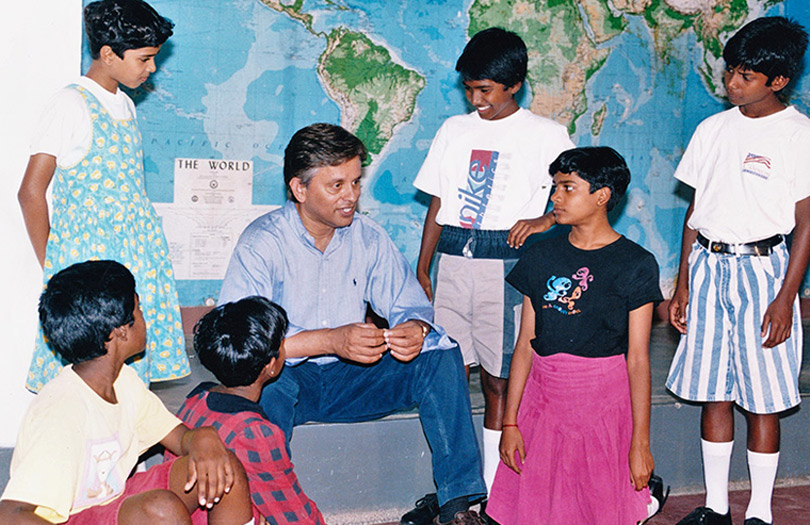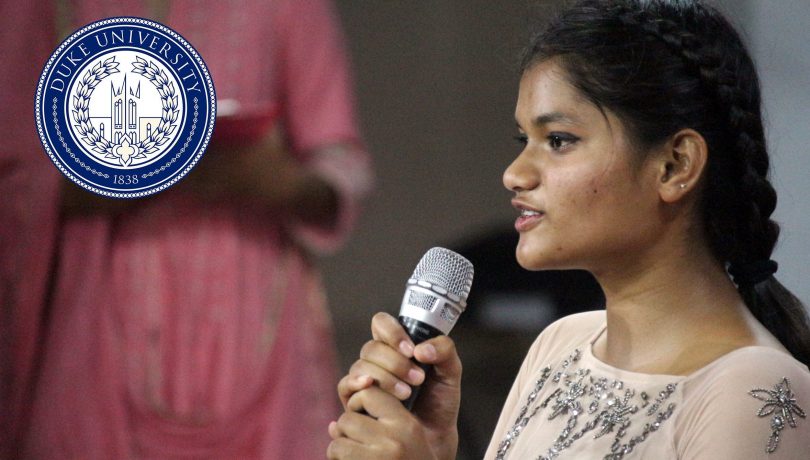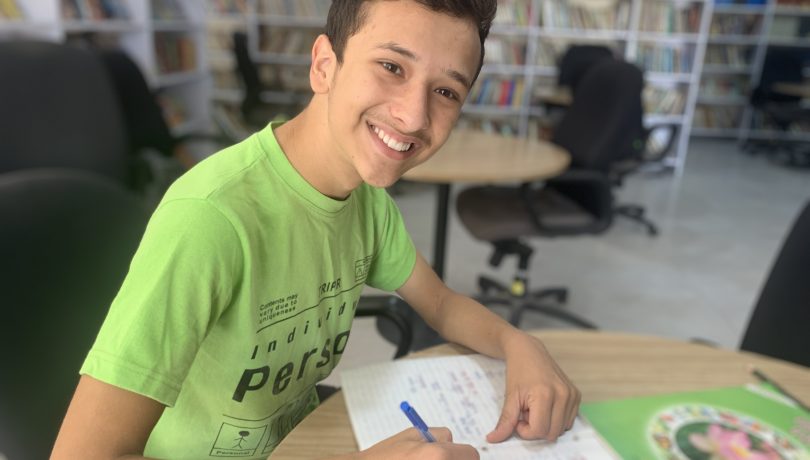
History of the 1990s: Shanti Bhavan’s Origins
When Dr. Abraham George returned to India in 1995, he was about to embark on the most fulfilling experience of his lifetime. He had been in the US since the age of 21, completed his higher education, raised a family, and established himself as an entrepreneur and professor. Although he led a successful life in the US, he was constantly drawn to the social and economic imbalance that plagued his native land and its people. Upon returning to India, he shifted his focus to eradicating the poverty and injustice that largely impacted the Dalit, formerly known as the “untouchable” caste. He founded The George Foundation (TGF) in Bangalore to carry out his philanthropic activities and pave the way towards a more just India.

The George Foundation tackles various issues, including poverty, gender equality, health, freedom of the press, and lead poisoning prevention. However, the most notable accomplishment of The George Foundation is Shanti Bhavan.
In 1997, Shanti Bhavan Residential School opened its doors and welcomed 48 students (24 girls and 24 boys). The idea behind the school was simple: if children from underserved backgrounds were provided with education, resources, and opportunities, they could reverse the effects of abject poverty and social, economic, and gender inequity. Dr. George funded the school himself, first creating a campus that provoked a sense of peace, then building essential facilities, and finally recruiting staff and teachers.
History of the 2000s: Success and Crisis
One of the first major challenges tackled by The George Foundation was accomplished through Project Lead Free, an initiative to identify levels of lead present among populations in India’s seven major cities. A screening of 15,000 children and 5,000 adults concluded that over 50% of the children tested demonstrated an unacceptable level of lead, while 14% showed serious levels, posing an environmental and health risk among urban dwellers. In collaboration with the Centers for Disease Control, the World Bank, and the US Environmental Protection Agency (UEPA), The George Foundation launched awareness campaigns that resulted in sweeping behavioral and policy changes in India, including removal of lead from gasoline. In partnership with St. John’s National Academy of Health Sciences (SJNAHS), The George Foundation established The National Referral Center for Lead Poisoning in India (NRCLPI), now a leading lead prevention institution.
Soon, The George Foundation began to expand its interventions to multiple areas of need. In 2000, the Baldev Medical and Community Center was constructed in Baliganapalli, near the Shanti Bhavan campus, to deliver free health service through household visits and regular medical care to the community. In the same year, the Indian Institute of Journalism & New Media opened with a mission to inculcate a new cohort of journalists on unbiased reporting that exposed corruption and poor governance. The George Foundation also established a banana farm on 250 acres of land, providing employment to women from the lower caste. At its peak, the Baldev Farm was the second-largest banana grower in Southern India. More than an agricultural industry, profits from the farm went back into the community, primarily to support the Baldev Medical and Community Center operations and enable the farm employees to purchase their own land to generate permanent sources of income.
In 2008, during the global financial crisis, Dr. George experienced a tremendous amount of loss, threatening the operations of Shanti Bhavan as well as the financial future of his own family. To revive the school, his older son, Ajit George, joined the effort. Some of the solutions included: transitioning from a family-funded nonprofit to a grassroots and donor-supported nonprofit; raising funds to meet the financial gap; engaging in long-term partnerships with other organizations, corporations, and individual sponsors; pausing some community improvement initiatives managed by The George Foundation; reduction of staff capacity at Shanti Bhavan; selling of personal assets in the US and India; and discontinuing student recruitment for two years to prioritize education and care of the current student population. In the US, Ajit took the initiative to develop an outreach team to engage donors, yielding support from family and friends, partner organizations, and individuals who believed in the Shanti Bhavan model. It took five years to recover from the crisis.
History of the 2010s: Expansion and Change
The 2010s ushered in a series of triumphs for Shanti Bhavan. In 2010, the first batch of students graduated from Shanti Bhavan and successfully transitioned to some of the top colleges in Bangalore. It was also the year that Academy Award-winning filmmaker Vanessa Roth developed an interest in the school and brought her film crew to campus, beginning the process that would eventually lead to Daughters of Destiny. In 2014, for her stalwart stance to attain an education despite her status as a Dalit, 13-year-old Visali Rajaram was selected as one of nine Glamour Women of the Year award recipients. In 2017, Netflix released the four-part series Daughters of Destiny to much acclaim. In 2018, Shanti Bhavan celebrated 20 years of triumph by hosting a gala in New York City, raising over $1.25 million and unveiling plans to open a second school.
By the end of the decade, Shanti Bhavan alumni were employed at multinational companies in India and abroad while grads pursued both undergraduate and higher education degrees in India, the U.S., Europe, Japan, and more. In 2020, Shanti Bhavan students were accepted to top-tier and Ivy League institutions in the U.S., including Dartmouth, Princeton, and Stanford.
Since its inception, Shanti Bhavan has remained a steadfast symbol of hope and perseverance while revolutionizing poverty alleviation programs. Backed by a vast community of supporters, Shanti Bhavan’s potential is limitless.

